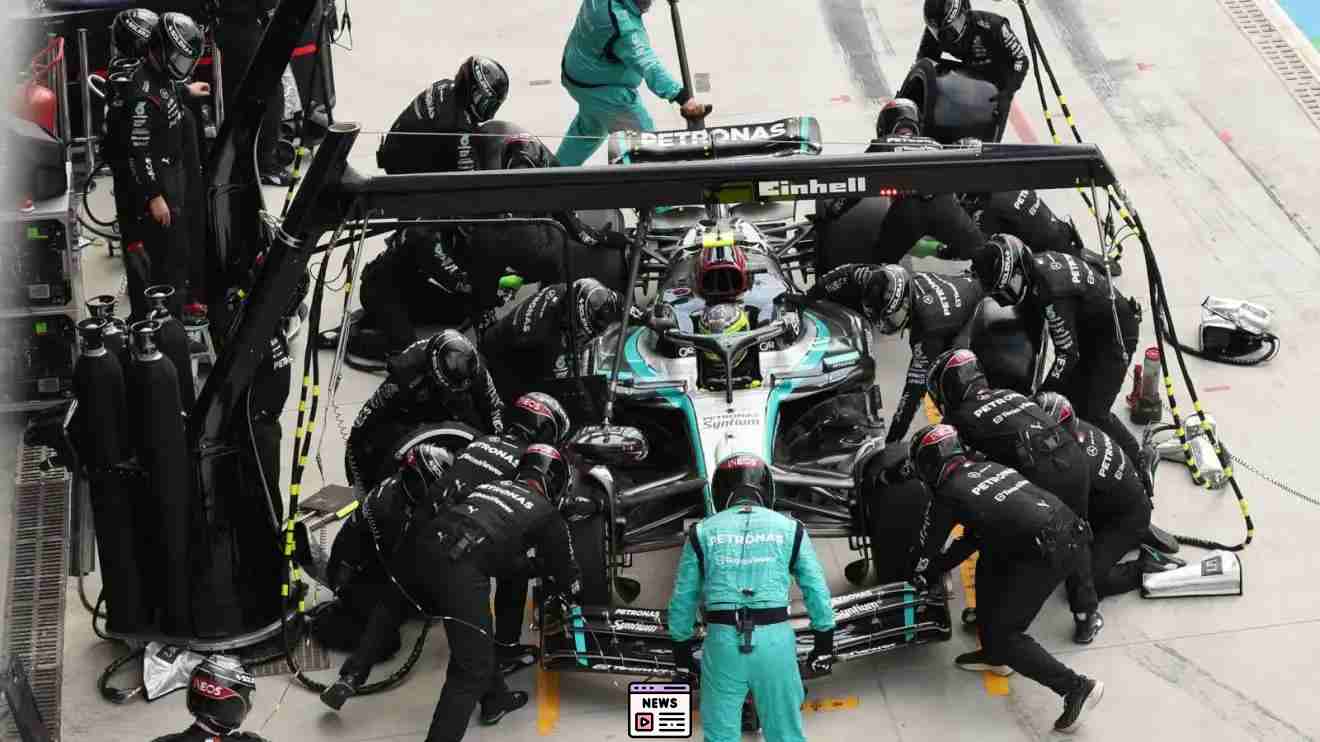Updated on: October 8, 2024 3:28 pm GMT
Mercedes Formula 1 drivers Lewis Hamilton and George Russell are grappling with performance issues following their disappointing performances at the Italian Grand Prix held at Monza on September 3, 2023. Despite positive practice results earlier in the weekend, the team experienced a significant drop in their race pace, leaving them puzzled and searching for answers as they aim to regain ground in the competitive landscape of Formula 1.
Disappointing Race Results
In the lead-up to the race, Hamilton showcased promising speed, topping both the second and third free practice sessions as well as qualifying in Q2. However, the race yielded a different outcome, with Hamilton finishing in fifth place and Russell in seventh. Hamilton crossed the finish line 22.8 seconds behind race winner Charles Leclerc, addressing the team’s struggles with tire degradation and a persistent lack of pace, stating, “We just didn’t have the pace. We have to go and look and try to understand why.” He noted that the car’s balance, while adequate, was not competitive enough, observing that they even “got almost slower through the weekend” compared to their competitors.
Russell’s race was marred by an incident in the first corner where he collided with another driver, causing front wing damage and forcing him to execute an early pit stop. He expressed disappointment in losing “a huge amount of performance” due to the damage, highlighting the unpredictable nature of the sport, particularly with the fluctuating performance of top contenders like Red Bull, Ferrari, and McLaren.
Assessing the Impact of New Upgrades
Both drivers indicated that their recent struggles coincided with Mercedes’ ongoing adjustments to the W15 model, which included significant upgrades made prior to the Belgian Grand Prix, specifically a new floor and diffuser. Mercedes trackside engineering director Andrew Shovlin acknowledged that while the upgrades were intended to enhance downforce, they had also resulted in alterations to the car’s handling characteristics, raising a “difficult question” as to how these changes might be affecting performance across different circuits.
Shovlin confirmed that the team had been closely monitoring the effects of the new floor over the past three races, indicating that they were successfully generating the expected load on the car. However, he emphasized that the team’s overall gains were modest, as they had not anticipated substantial improvements. He stated, “We’re measuring the forces that it generates on the road through the suspension… we can correlate that with what we’re seeing in the wind tunnel, allowing us to get a pretty decent read on whether it’s doing what we expect.”
The Road Ahead for Mercedes
Looking ahead, Hamilton expressed optimism for improvements in future races, citing the potential benefits of upcoming minor upgrades. He remains hopeful about the prospect of competing for wins again, stating, “We do have small bits… hopefully we have some more performance.” As the Mercedes team aims to identify and rectify the issues affecting their car, they face the challenge of consistently operating at a competitive level in an increasingly unpredictable field.
In the context of the Constructors’ Championship, Mercedes currently sits in fourth place with 292 points, trailing third-placed Ferrari by 115 points. As they analyze their race data and consider their strategy for the remaining races of the season, the integration of feedback from the drivers will be critical to refining the W15’s setup and performance.
Reflections on the Current Formula 1 Landscape
The 2023 season has proven challenging for many teams, with an unpredictable performance hierarchy impacting race outcomes. While Red Bull has shown vulnerabilities, Mercedes’ position reflects the complexity of current regulations and their effects on car development. Comparing their performance across successive races has highlighted inconsistencies that depend heavily on the characteristics of specific tracks.
As teams prepare for the next round of the championship, Mercedes will need to tackle the “subtle” handling questions raised by their recent upgrades and ensure that they are not only generating downforce but also optimizing it for competitive race performance. The upcoming races will be pivotal in determining whether the W15 can reclaim its competitive edge in a season where maintaining consistent performance has become increasingly challenging.
- Monitor future performance recovery in the next races.
- Evaluate and refine W15’s handling characteristics based on recent feedback.
- Focus on consistent data analysis to inform strategic decisions for future upgrades.
It seems like you didn’t provide any content for me to rewrite. Please share a paragraph, and I’ll be happy to help make it more natural and easy to read!
